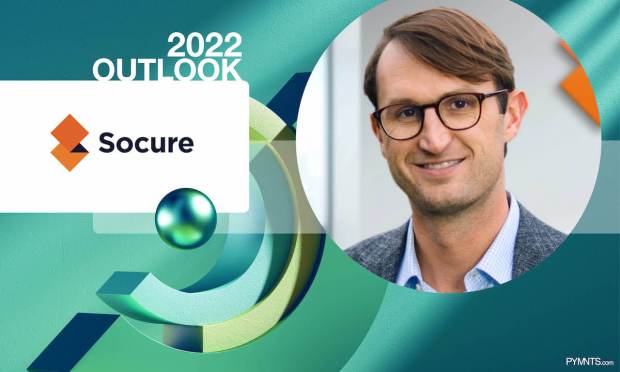Crypto’s Coming of Age

As more mainstream financial institutions participate in the cryptocurrency ecosystem, there is growing confidence that cryptocurrency can be a stable, widely accepted form of global value exchange. In the PYMNTS eBook, “Endemic Economics: 32 Payments Execs on the ‘Next Normal’ That Never Happened,” Socure Founder and CEO Johnny Ayers discusses how changes in the regulatory climate are speeding up adoption.
Cryptocurrencies have been experiencing significant growth and adoption for a number of years. Today, approximately 40 million Americans, representing 16% of the adult population, have invested in, traded, or used cryptocurrency. And while there was worry about new regulations, digital currencies soared following President Biden’s recent executive order, signaling that the industry believes cryptocurrency is here to stay
As more mainstream financial institutions participate in the cryptocurrency ecosystem, there is growing confidence that cryptocurrency can be a stable, widely accepted form of global value exchange. With this executive order, and an industry committing to establishing controls that balance innovation with risk, cryptocurrencies will have a degree of credibility that is sure to foster even faster adoption.
While skeptics continue to point to cryptocurrency being used in illicit financing activities such as money laundering, there is growing recognition of its value as an alternative form of stored value and digital money. As the White House develops a baseline of dynamics for the space, that will lead to regulatory guidance as well as signal to Wall Street and the industry that cryptocurrency is truly here to stay.
Formal guidelines are also needed because of a suboptimal status quo with respect to risk management and identity verification practices. The industry currently lacks regulatory oversight, so it comes as no surprise that many exchanges and wallets are targets of sophisticated fraud rings. Since inception, many cryptocurrency services have relied heavily on ID document verification at account opening to verify identities and prevent fraud. These systems typically introduce high levels of friction for consumers during their account onboarding experience and require additional checks to allow trading or other types of transactions. In fact, it is not uncommon for a wallet or exchange to require several days between account deposit and an actual cryptocurrency transaction to ensure that the person is who they say they are and using their own account. In the case that a bad actor uses a stolen bank account to make a deposit, this time lapse allows for the true owner of a bank account to potentially notice the fraudulent transaction and work with their bank to reverse it.
Luckily, there are faster, more efficient, and accurate ways for cryptocurrency companies to verify identities and grant ‘good’ customers immediate access to buy, sell, or send cryptocurrency, while also keeping bad actors out.
The answer lies in a graph-defined identity verification approach, which can transform the industry for the better. Socure’s platform helps drive growth securely and at scale by providing a frictionless customer onboarding experience and, most importantly, doing so while reducing fraud. For example, the platform delivers auto-approval rates of up to 98% for mainstream populations, and up to 94% for the hard-to-identify populations such as Gen Z, millennials, credit invisible, thin-file and new-to-country. Working with some of the top exchanges in the industry, Socure can also passively capture up to 90% of fraud in the riskiest 3% of users and reduce false positives by more than 13x compared to legacy solutions. Automatic, frictionless fraud checks at account opening, account updates, and at transaction allow more good customers to accelerate their time to transact. This result means increases in customer lifetime value, while preventing bad actors from entering the ecosystem and siphoning off value from legitimate companies and consumers.
Cryptocurrency has the potential to have a big impact on the way we all use money. But the industry must make changes to enhance the customer experience while preventing fraud. The movement has started. This next phase of regulatory oversight combined with new technology innovation has tremendous promise, and Socure looks forward to powering what comes next.
